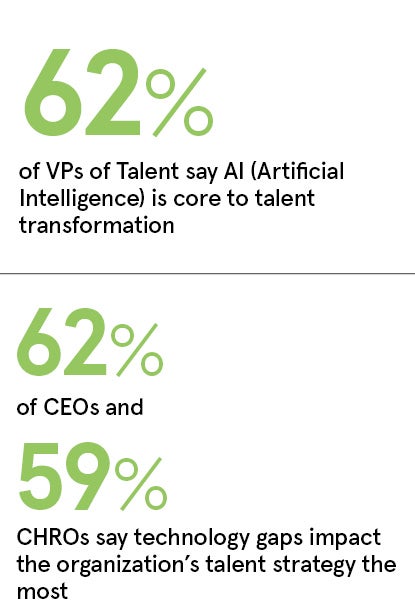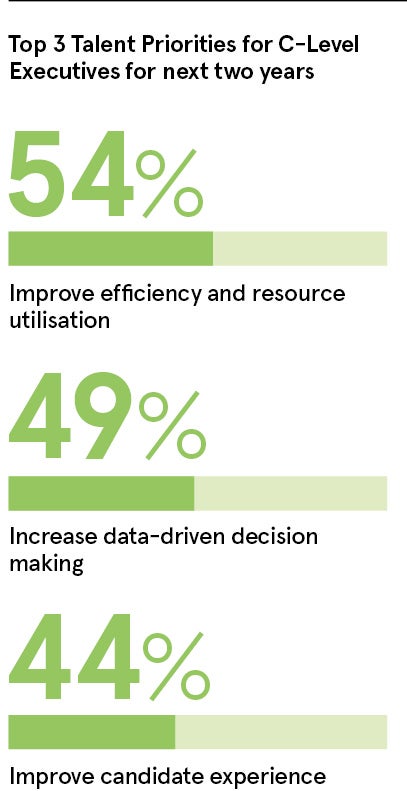Data and intelligence have long been powerful sources of strategic advantage for businesses. Primarily, efforts in these areas have focused on attaining granular information on customers, analysed in depth to improve sales, services and responsiveness. Most companies, however, don’t have this same level of data infrastructure, insights and intelligence on hand to create an agile and strategic talent function.
In fact, business leaders often know very little about their most important asset: their people. Whether current employees or future hires, little is known about their skills, backgrounds and potential.
“A company’s talent function is often the least well informed by data, and it is stuck in an old-fashioned staffing model instead of looking at how to manage, develop and maximise people’s growing skills,” says Abakar Saidov, chief executive at talent platform Beamery. “The most common question we hear from chief human resource executives is ‘What skills do my people have?’. It’s amazing they don’t know the answer.”

Even though approximately 60 per cent of Fortune 500 company budgets are allocated to human resources costs, “companies have significant gaps when it comes to truly understanding their people”, he adds. “Compare this to the 10 per cent spent on marketing, which is constantly assessed for results.”
To safeguard their future and ensure they consistently deliver against high-priority targets, whether around existing business growth, diversity or expansion into new markets and product lines, the modern enterprise needs a new “operating system” for its talent. Such a system gives them the intelligence they need to make the right decisions about their people, hit company goals around diversity recruitment, engage potential high performers and build the workforce of the future.
Technology gaps create barriers to transformation
More than six in ten chief executives recognise technology gaps are the main barriers to a successful talent strategy, according to a Beamery survey of over 400 senior decision-makers globally. Improving resource utilisation and efficiency has become the top business priority, with many planning to increase the role of data in decision-making.
Critical information gaps are currently one of the principal impediments; at the moment, many firms fail to record up-to-date, informative data that enables judgments on available skills and potential. Most accessible information on talent is “surface level and outdated”, Saidov notes, taken from CVs and online job application forms or HR systems that simply hold administrative data instead of tracking changing capabilities. “People are treated as employment objects rather than seen for their skills trajectory and what they will contribute,” he says.
The C-suite has high expectations from talent management and it’s becoming a core operation
Identifying in-house skills and capabilities, and understanding any gaps, can enable companies to better meet their strategic aims and adapt more quickly to change and disrupt markets. Saidov says: “It also allows organisations to ensure candidates have a relevant, positive experience with their brand, similar to what they may offer as part of their customer experience. Lacking this awareness, by contrast, can mean organisations stagnate and suffer negative consequences to their brand image.”
Building an agile workforce with technology
Many organisations, including three of Fortune magazine’s top ten most valuable brands, already rely on Beamery’s Talent Operating System to help future-proof their workforce, consistently bring the right skills and capabilities into their company, and grow the careers of their employees in a way that aligns with business strategy.
The system helps organisations transform how they hire and retain a global, diverse workforce, using artificial intelligence and deep learning to give strategic insights and identify potential skills gaps that might put future business efforts at risk. Equally, it drives more effective and less biased recruiting practices, and helps organisations power their next phase of growth.

“At a time when business agility has never been more important, the Talent Operating System has the crucial capability of analysing companies’ talent gaps and areas of underinvestment, from billions of datapoints, taking into account realistic skills progression rates, market shortages and likely future requirements,” says Saidov. “In many industries, these skills needs are changing faster than ever. Companies must understand what will be required and how to get there through hiring, reskilling and upskilling.”
Global 2000 leaders make a strategic impact
A number of leaders of the world’s largest businesses are making significant advances in this regard, harnessing sophisticated talent management to deliver on business strategies. Among them is the world’s largest ecommerce company, whose talent function comprises thousands of staff and is positioned as a key competitive advantage. It uses Beamery to focus on resource allocation and prioritisation, the engagement of candidates and managing skills in line with strategic plans.
Meanwhile, pharmaceutical giant AstraZeneca uses Beamery to develop its skills base, engaging more effectively with the more than 300,000 job applicants it connects with each year, improving both efficiency and hiring success rates. Similarly, one of the world’s largest construction companies uses Beamery to centralise data on thousands of third-party contractors, effectively resourcing projects with fast-changing priorities and timelines.
It analyses current talent and skills trajectories to automate identification, attraction and engagement for all candidates. Even the National Basketball Association in North America now runs its talent operation on Beamery, using it to scout its next basketball stars.
“Across sectors, the C-suite has high expectations from talent management and it’s becoming a core operation. When empowered by advanced technology, businesses can secure and keep the skills needed to meet their strategic objectives,” Saidov concludes.
In today’s state of constant change, leaders need a better way to respond and adapt their workforces to remain competitive, and to be ready for more change at a moment’s notice. Those armed with the right data and insights will thrive, be best prepared to build the agile workforce of the future and achieve the success needed to disrupt their industry.
To learn more please visit beamery.com
Sponsored by
Data and intelligence have long been powerful sources of strategic advantage for businesses. Primarily, efforts in these areas have focused on attaining granular information on customers, analysed in depth to improve sales, services and responsiveness. Most companies, however, don’t have this same level of data infrastructure, insights and intelligence on hand to create an agile and strategic talent function.
In fact, business leaders often know very little about their most important asset: their people. Whether current employees or future hires, little is known about their skills, backgrounds and potential.
“A company’s talent function is often the least well informed by data, and it is stuck in an old-fashioned staffing model instead of looking at how to manage, develop and maximise people’s growing skills,” says Abakar Saidov, chief executive at talent platform Beamery. “The most common question we hear from chief human resource executives is ‘What skills do my people have?’. It’s amazing they don’t know the answer.”


